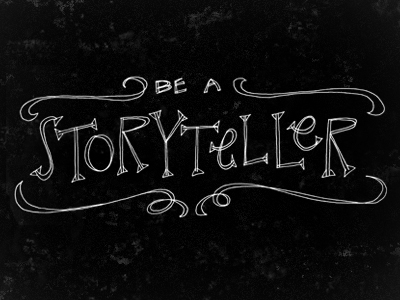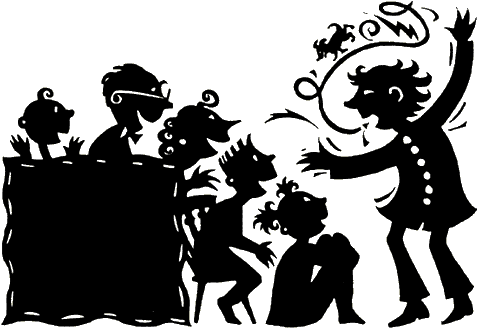“When you tell a story, you create a gateway for understanding.”
Dave Kerpen
During this muggy summer, I met with Davide Patruno – Director of Human Resources at Maxizoo, a retail chain specializing in animal care – to talk about storytelling.
Since a few years back, Davide Patruno has been interested in this topic [i].
Our conversation begins by sharing our points of view, and we are both of the opinion that storytelling is a marketing tool that has an extremely effective application in retail and sales networks. When it is mastered by the sales staff it is in fact a way to circumscribe what you want to communicate to customers and strengthen your market positioning. Davide remembers with affection and enthusiasm the use of storytelling for a commercial purposes created ad hoc for Swatch, that briefly highlighted some product features and some production specificities. The experiment soon bore fruit, and it was easy to see how much impact the perception of the added value of the product’s story and its characteristics had on customers’ purchasing decisions.
Storytelling for employer branding
The conversation gradually shifts from using storytelling for the apparent marketing purposes to the employer branding dimension. Because storytelling can be an amazing glue to keep people connected to a powerful idea or experience. Did you know that Maxizoo’s headquarters in Germany has a garden where different species of animals live? And that employees, at each of the Company’s locations, are allowed to bring their pets into the office as long as they are not disturbing to others? Davide found out about this while he was at Maxizoo’s headquarters completing the selection interviews that would lead him to his current position…and he thought it was a wonderful story to hear and tell.
Stories, the engine for action
The power of stories is also measured by their ability to become an engine for action, to encourage people to make their own personal contribution. This is the case when storytelling is used to raise awareness of the socially useful issues and to activate behaviors consistent with company policy, such as recycling and energy saving. Storytelling in these cases does not simply mean building a good corporate communication campaign, but giving a narrative framework to an educational intention.
How to educate through storytelling
After having focused on the theme of the educational power of storytelling, the question Davide Patruno and I asked ourselves is as follows: is it possible to educate through storytelling? Or rather: if, as some models of leadership[ii] state, storytelling is a crucial skill for the leader, is it possible to stimulate this attitude in managers?
What is certain is that, today, social relationships and the size of the network are two crucial elements in the exercise of leadership, and one way to give quality to one’s relational network and enhance it is to make use of stories and to listen carefully to what happens inside and outside the company. To this day, the potential of storytelling for leadership development is probably underestimated, so we can’t help but wonder how HR can help leaders be storytellers as well.
The ingredients of storytelling
What are the ingredients for storytelling? For telling high-quality stories to employees and customers? We believe there may be 5 essential characteristics: simplicity, authenticity, credibility, memorability and uniqueness. This means working in the direction of training leaders to know how to reframe their experience and how to tell it. It means emphasizing the reflective role of learning, giving space and value to the autobiographical dimension, subjective, elaborated and reformulated so that it can be the expression of a common feeling.
The narrative process of the HR role
And so the role of the HR function also changes because its mission instead becomes to contribute in building the conditions for truly active and quality listening within the organization, capable of generating feedback that is understood and integrated into the narrative process to give meaning and significance to the story of that company.

The actors of storytelling
Storytelling is structurally composed of two actors: the teller and the listener, and between them there is a circular and evolutionary relationship. In this sense, in addition to “educating through storytelling” it becomes equally important to “educate on active listening“. The story is nourished and comes to life if it becomes a channel of communication, dramatization and stimulus of attention and mutual learning between those who tell and those who listen.
This is something I experience every day when I tell a story to my children. They don’t speak articulately yet, but they know single words and they use a lot of paraverbal (or analogical, as Watzlawick would say) language to express their participation in what is happening around them. The experience of my telling and their listening is in fact an experience of dialogue characterized by the pleasure of telling and hearing a familiar story, enriched with gestures, sounds, predictable questions and familiar answers but each time adding new things that are integrated into the next version.

In the rituality of the narrative action, the story becomes, each time it is told, a medium for dialogue and for constructing the narrative together through the theatricalization of consolidated learning and the expectation of new emotions generated by the game of identification with the characters in the story. On the billboard of the Mexico cinema in Milan for 32 years is the performance ‘Rocky Horror Show’, a theatrical version of the film with the same name. During the projection, just like in the film ‘Fame’ by Alan Parker and from which the owner of the Mexico was inspired, the spectators interact with the actors on stage who mimic and interpret the film live.
Perhaps to help leaders be good storytellers, all it would take is to tell two stories like these and then, afterwards, simply ask them to tell a story and listen to the stories of others.
Sara T.
[i] Davide Patruno, Il valore della narrazione in “Persone e conoscenze”, number 81 August/September 2012, Edizioni ESTE Milano.
[ii] Dave Kerpen, Likeable business. Why today’s consumers demand more and how leaders can deliver, Mc Graw Hill 2003

